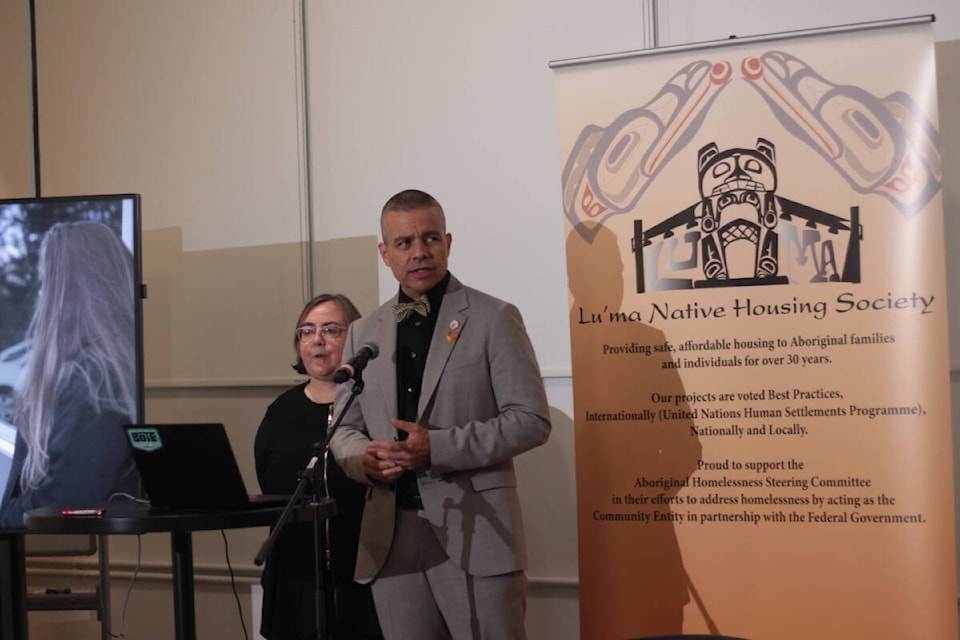Homelessness in Greater Vancouver was up 32 per cent from three years ago and officials say it’s still likely considered an under-count.
The count took place in two parts in March: A shelter count on the evening of March 7 and a daytime count on March 8. It identified 4,821 people were experiencing homelessness.
READ MORE: Count of Metro Vancouver homeless underway after pandemic hiatus
“When I look at the literature, it would say that at the very minimum, it’s likely three to four times higher than any count and some will say be as much as 10 times higher, because people do everything they can to prevent being on the streets,” explained Lorraine Copas, chair of the Greater Vancouver Community Advisory Board for Reaching Home, during a news conference Thursday (Oct. 5).
Copas said there’s a “hidden homelessness piece that we won’t see.” She pointed to a type of study called community level determinants of homelessness, which can almost predict how much homelessness will increase. Those measures, she said, include that if rents in an area have increased by more than $100 month over the course of a year, you’re going to see more homelessness.
“If your social safety net is weaker, you’re going to see a lot of homelessness. When we look at income assistance and income, even though there have been improvements in that areas, there’s still a lot of weakness.”
Lu’ma Native Housing Society shared the findings Thursday (Oct. 5) of the 2023 Point-in-Time Homeless Count for Greater Vancouver. It’s meant to be a snapshot of homelessness in the region, representing a minimum number of people experiencing homelessness, not an average or maximum.
Counts are held every three years, and the last count was in March 2020, just as the COVID-19 pandemic began to take centre stage. That year, 3,634 people were identified as experiencing homelessness.
The count this year included the communities in the North Shore, Vancouver, Richmond, Delta, Burnaby, Surrey, New Westminster, the Langleys, the Tri-Cities, Maple Ridge and Pitt Meadows.
Of the 4,821 people, about 33 per cent of them identified as Indigenous. That’s compared to two per cent of the census population, while 64 per cent of those who identified as Indigenous reported having lived or generational experience with residential schools.
A breakdown of how Indigenous people have a higher representation of homelessness pic.twitter.com/FUBEOwoVDx
— Lauren Collins (@laurenpcollins1) October 5, 2023
Based on the data, men were the most represented in the data at 69 per cent, followed by women at 28 per cent and three per cent identifying with a different gender identity.
But David Wells said that’s a limitation of the methodology.
“We know that women are much more likely to be experiencing homelessness in a in a hidden way. Whether that be couch surfing, connecting with family, engaging in the sex trade. There’s a number of different reasons why it’s harder to really quantify women’s experiences of homelessness,” said Wells, chair of the Indigenous Homelessness Steering Committee and the Indigenous Community Advisory Board for Reaching Home.
It’s also true for Two-Spirit and non-binary populations.
While COVID wasn’t the main factor in what led to people experiencing homelessness, it did play a role.
Wells said the main reason – about 35 per cent – for loss of housing was not enough income. It was followed by substance-use issues at 24 per cent and mental health issues at 16 per cent.
“We need to place this within the large, systemic conversation about what’s happening in our communities that makes it so unaffordable for people to live here, that they still remain in that community because that’s where their services and networks are.”
One of the findings that “stuck out,” explained Wells, was that 81 per cent of respondents were experiencing homelessness in the community they were last housed in. It points to a misconception that people are coming to the Greater Vancouver region to be homeless.
READ MORE: B.C. has to find solution for homelessness in rural areas, says regional district chair
